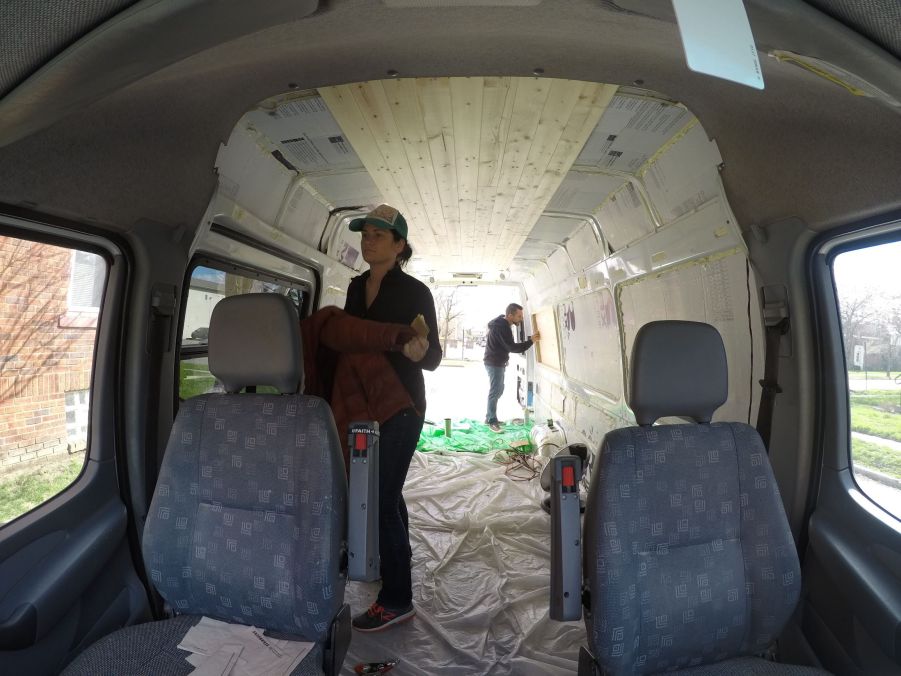
Here’s What You Need To Know About Making a DIY Camper Van
While motorhomes and camper vans aren’t the same thing, they’re both RVs. And though they’re not as spacious, vans are cheaper and easier to live with. Still, while many companies offer sweet van conversions, they can get pricey. Luckily, it’s possible to DIY it. But before you make your own camper van, there are a few things to keep in mind.
Planning and preparing your camper van for the build
Besides the van itself, making a DIY camper requires stocking up on tools and supplies. But before you do that, you’ll need to figure out what you want/can fit in the van, Outside explains.
Answering that inquiry requires knowing several important details. Firstly, how much space does your future camper van offer and how much weight it can carry. That limits the kinds of features, amenities, and comforts you can physically fit inside and outside.

Secondly, where and when do you plan on using the van? If you’re going into colder environments, you’ll need to take insulation and heating equipment into account.
Finally, what’s your budget look like? And not just in terms of money, but in time, too. Building a camper van yourself isn’t a quick process. Sometimes, spending a bit more cash for a pre-built solution is worth the time savings.
Once you’ve got this information gathered, you should sketch and mock your camper layout up. Outside recommends using cardboard, because it’s cheap and easy to work with. Plus, not only will you get a good sense of space, but also how easy it is to live with. And it’s better to rearrange or remove cardboard cutouts than an actual bed or stove.
What kind of tools, gear, and materials do you need to make a DIY camper van?
Speaking of the stove, that’s one of the bare-minimum pieces of equipment your camper van needs, Outside reports. Besides that, you’ll need storage space, a fridge, a clean water supply, a sink, and a way to power your electronics. And if you’re worried about cold, a heater. But keep in mind, many of these things require plumbing and wiring systems. In the case of the stove and heater, you may need a gas supply, too.
You can fit an on-board generator, but Outside recommends using solar panels and battery packs instead. They’re more efficient and easier to maintain than a generator anyway. Also, no need to worry about your gas or propane running out.

Plus, you’ll need somewhere to sleep. But if you don’t want or can’t fit a bed, a rooftop tent for your camper van is an option, Automobile reports.

As far as tools go, that depends on the van you’re starting with and how extreme your build is. If your base van is a cargo van, there aren’t any seats or much interior trim to remove. But if you’re starting with a passenger or minivan, you’ll have to strip parts of the interior away.
Most of that can be done with some screwdrivers and wrenches. And unless you’re heavily modifying the van’s exterior, that might be all you need, Outside reports. But if you’re drilling new holes or cutting into the roof for skylights, you’ll need to invest in or borrow power drills and saws.
Helpful kits, suppliers, and options to keep in mind
If the thought of drilling or cutting into your van has you worried, know that not every camper van modification requires it. And there are companies providing ready-made kits for your convenience.

There are a few other ways to save money on camper van builds, though. One is to buy a used, already-made one. Admittedly, that’s not exactly a cheap solution, but it’s often cheaper than buying brand-new. And you’ll save yourself the time and investment needed to plan and assemble the van yourself.

The other option is to consider a teardrop, travel, or similar trailer, Outside reports. It means towing and storing a separate trailer. And they’re not as spacious or as tall as a van. But they come ready-made and leave you with an unaltered van for when you’re not adventuring.
Follow more updates from MotorBiscuit on our Facebook page.


